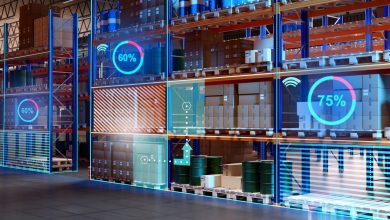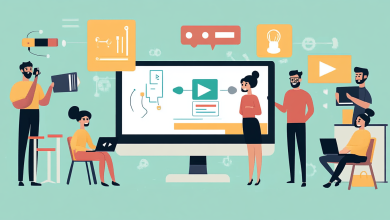
A few weeks ago, I sat with our marketing operations team as we took a sledgehammer to what has been the sacred foundation of marketing automation for the past decade: lifecycle stages and workflows.
It felt both terrifying and exhilarating.
Why We Need to Break Things
That sledgehammer was the result of many months spent unpacking the impact agentic AI was beginning to have on marketing. After doing a lot of research, talking to peers, listening to experts who know much more than I do… what I realized was this: if you’re still thinking in workflows, you’re missing the revolution.
Marketing workflows are a staple, if not the purpose, of most marketing jobs today. These are the step-by-step processes that teams use to execute campaigns, from planning and creation to execution, within the technologies they use to interact with customers.
In reality though, marketing workflows were created as a necessary evil — a macro representation to help humans understand and organize databases of hundreds of thousands (B2B) or millions (B2C) of other humans. They were our way of making sense of complexity with the tools we had, and of communicating our human thoughts into machine language that our ESPs and CDPs and marketing automation tools could understand.
Here is where the revolution is happening. Because agentic AI? It doesn’t need those same crutches.
Agentic AI doesn’t need your lifecycle stages. It doesn’t need your campaign workflows. It doesn’t need your carefully constructed if/then scenarios that took weeks to build and months to perfect.
All it needs is a prompt.
From Automation to Autonomous
This isn’t just about changing how marketers work — it’s about changing what marketers can do.
Traditional marketing automation is based on rigid rules: if a customer does X, send them Y. It’s effective but inherently limited by human imagination and bandwidth. Marketers simply can’t create enough pathways to truly personalize customer interactions at scale.
Agentic AI fundamentally changes this equation.
Rather than building workflows that approximate personalization through segments and triggers, we can now train AI to think and respond like we would — understanding context, inferring intent, and making decisions autonomously based on real-time data.
The difference is seismic:
- Marketing Automation: Rule-based systems that execute predefined pathways
- Autonomous Marketing: Intelligent systems that assess, adapt, and take action with minimal human intervention
Real-World Applications
What does this look like in practice? Here are emerging use cases:
- AI-Driven Segmentation: Instead of manually creating audience segments, AI can analyze millions of customer attributes in real-time, identifying patterns and opportunities human analysts would miss.
- Autonomous Campaign Creation: Rather than building workflows from scratch, marketers can brief AI on campaign objectives and audience insights, then review AI-generated campaign structures.
- Real-Time Personalization: AI can adjust messaging, offers, timing, and channel selection at the individual level, creating infinite variations impossible to pre-program through traditional workflows.
- Predictive Journey Orchestration: AI can anticipate customer needs and dynamically adjust journeys without predefined paths, responding to subtle behavioral signals with relevant content.
We’re already starting to see agents taking on some of these workflows on an individual basis, and it won’t be long until those agents are all working in unison. Rather than separate prompts to generate each part of the workflow, it will be a single, goal-driven prompt that the AI agents autonomously figure out how to execute on.
Unlearning What Feels Safe
This transition requires significant unlearning. We’ve spent our careers building expertise in constructing these workflow labyrinths. We’ve earned certifications, built teams, and developed entire careers around mastering these systems.
Now we need to let them go.
I was at an auto shop last week and asked the mechanic if AI was impacting his job. “Not really,” he said. “Robots won’t be able to do my job.” I found temporary comfort in his certainty, but also a little bit of frustration at the complacency! We should all assume our jobs will evolve — that’s been a fundamental truth with or without AI.
But particularly in fields like marketing, we need to accept that our jobs are already evolving. Complacency won’t change that. We need to lean into the transformation, to take the sledgehammer to what we know won’t exist a few years from now, so that we can start learning what to build instead.
How to Start the Reinvention Process
In the age of agentic AI, our jobs are largely going to shift from creating workflows to constantly training and retraining AI, expanding its knowledge, and ensuring it’s connected throughout our organizations. For myself and my team, we’ve been using that as our guide and re-imagining our roles with that direction. A few exercises and approaches that have helped:
- Start From Scratch: Start conversations assuming your current job doesn’t exist. If AI could do what you do today, what would that look like? What would you need to teach it? Can you step back and pinpoint the strategic goals behind the manual actions you take today? This is difficult but essential work.
- Centralize Your Data: Stop buying disconnected tech tools. Ruthlessly consolidate systems to create coherent data sources that can power AI effectively. Yes, I’m a marketer who loves new tools too, but fragmented data makes AI less effective.
- Celebrate Failed Experiments: Keep challenging your teams to transform their work with AI. Recognize that early attempts will often fail. I’ve always said marketing is about 80% failure (the other 20% breaks down to 15% that worked as expected, and 5% where lightning struck). AI is not going to work perfectly at first! Don’t stop. The key is persistence and learning.
This isn’t about replacing marketers — it’s about elevating their roles. As AI takes over workflow execution, marketers can focus on strategy, creativity, and training AI to embody brand values.
We become coaches and collaborators rather than flow-chart architects. We teach AI to think with our strategic minds while executing with superhuman precision and scale.
Breaking Things is the Beginning
Our marketing operations team’s response to dismantling workflows surprised me — pure excitement. They immediately grasped that breaking these traditional structures wasn’t destruction…it was reinvention.
The path forward isn’t about building better workflows but reimagining what’s possible when we remove their constraints entirely. It’s about creating marketing that responds to each customer as a unique individual rather than a member of a segment flowing through a predetermined path.
Yes, my brain hurts thinking about this transformation. But it’s the good kind of pain — the stretching of possibilities and the start of something new. Our marketing future depends not on mastering today’s workflows but on boldly breaking them to build something better.





